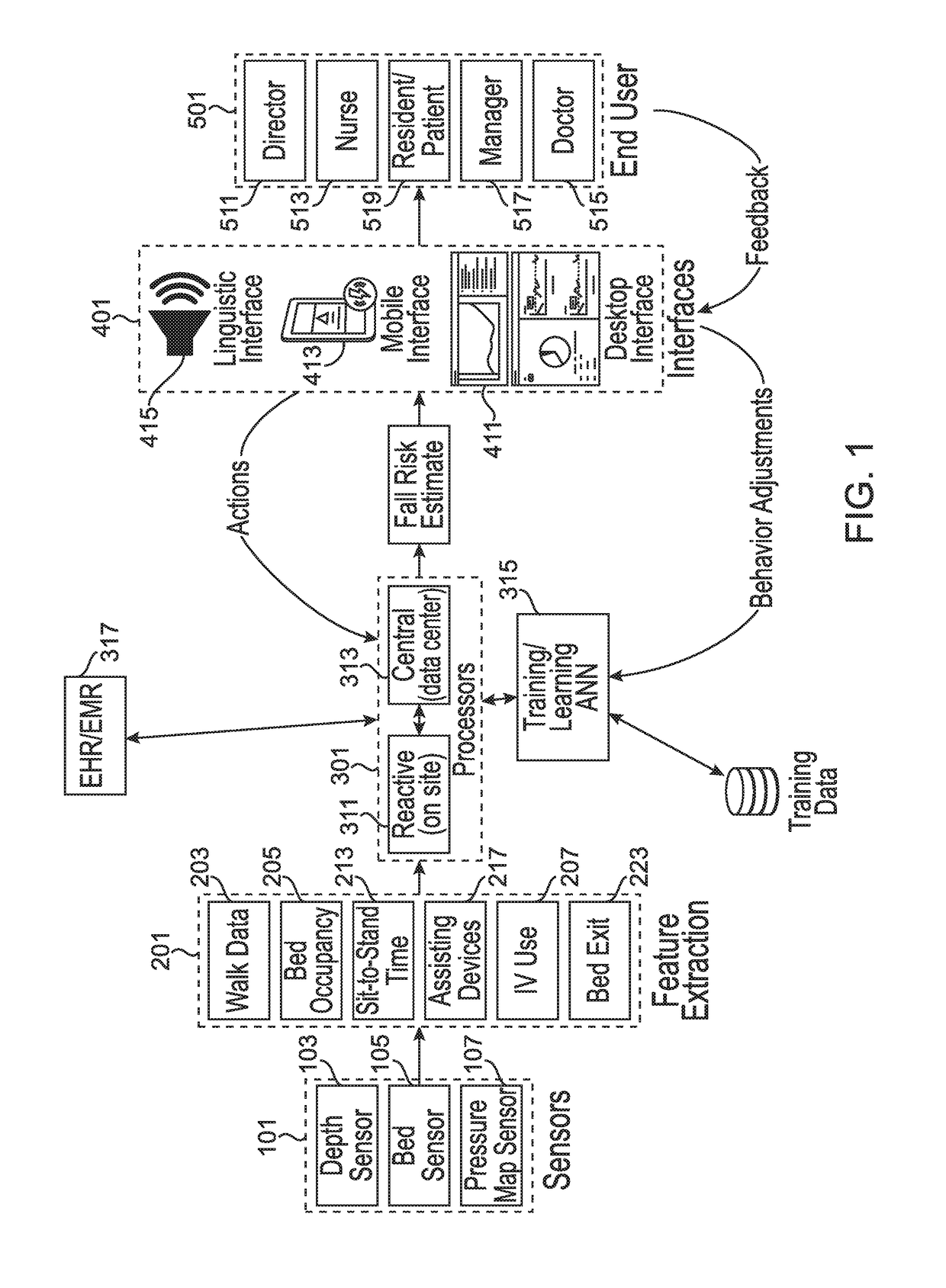Systems for automatic assessment of fall risk
a technology of automatic assessment and fall risk, which is applied in the field of automatic assessment of fall risk, can solve the problems of difficult to believe that falling can be one of the most dangerous things that can happen to a human, the potential damage of a fall can go up dramatically, and the population is often much more susceptible to body damage, so as to eliminate the effect of potential bias or relative skill
- Summary
- Abstract
- Description
- Claims
- Application Information
AI Technical Summary
Benefits of technology
Problems solved by technology
Method used
Image
Examples
Embodiment Construction
)
[0038]The following detailed description and disclosure illustrates by way of example and not by way of limitation. This description will clearly enable one skilled in the art to make and use the disclosed systems and methods, and describes several embodiments, adaptations, variations, alternatives and uses of the disclosed systems and methods. As various changes could be made in the above constructions without departing from the scope of the disclosures, it is intended that all matter contained in the description or shown in the accompanying drawings shall be interpreted as illustrative and not in a limiting sense.
[0039]Described herein, among other things, is a system and method for the automatic assessment of a person's fall risk. The systems and methods herein utilize a more objective standard and evaluation of a person's gait and stance and other factors to determine their current, and instantaneous, likelihood of a fall as well as their ongoing fall risk. Further the systems ...
PUM
 Login to View More
Login to View More Abstract
Description
Claims
Application Information
 Login to View More
Login to View More - R&D
- Intellectual Property
- Life Sciences
- Materials
- Tech Scout
- Unparalleled Data Quality
- Higher Quality Content
- 60% Fewer Hallucinations
Browse by: Latest US Patents, China's latest patents, Technical Efficacy Thesaurus, Application Domain, Technology Topic, Popular Technical Reports.
© 2025 PatSnap. All rights reserved.Legal|Privacy policy|Modern Slavery Act Transparency Statement|Sitemap|About US| Contact US: help@patsnap.com

